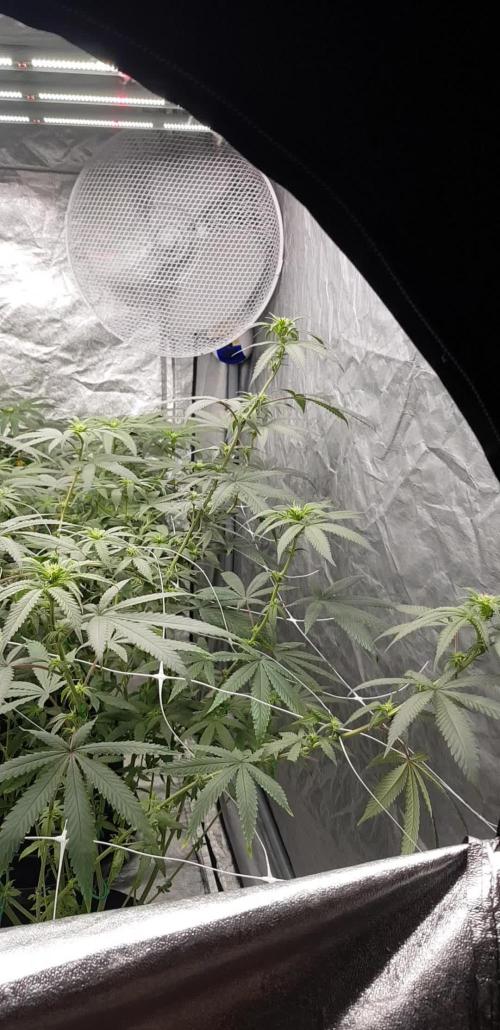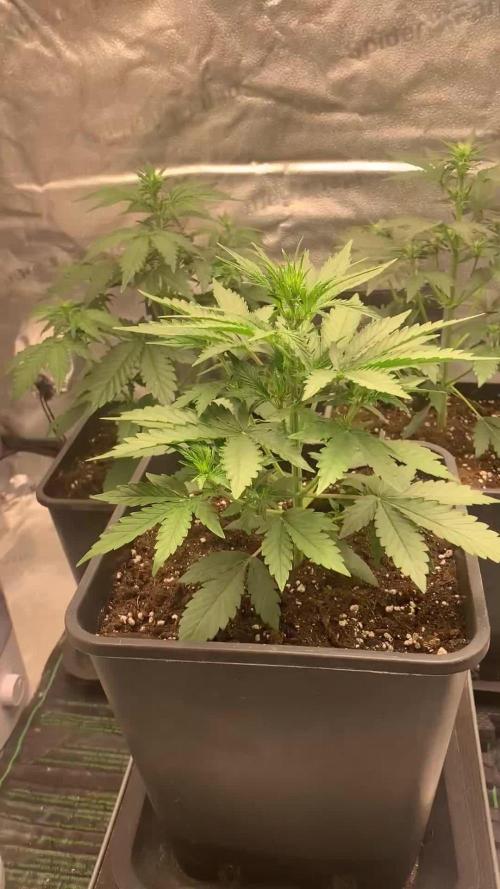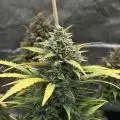The Grow Awards 2026 🏆 





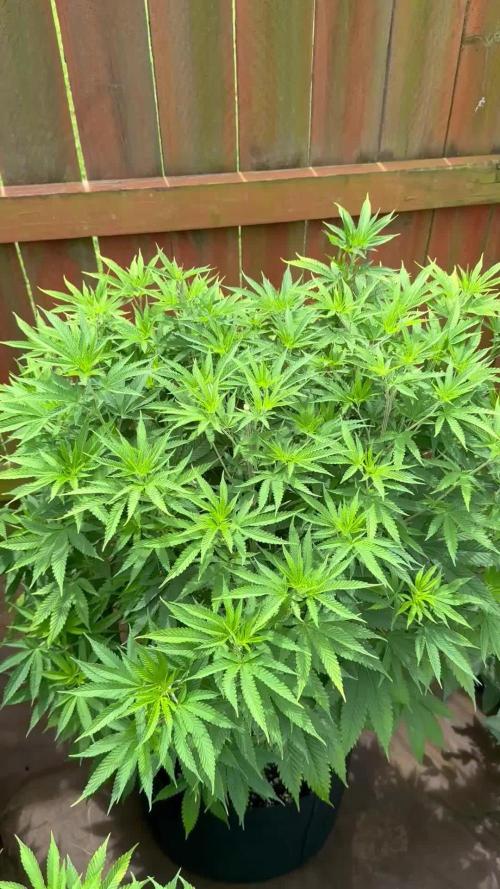











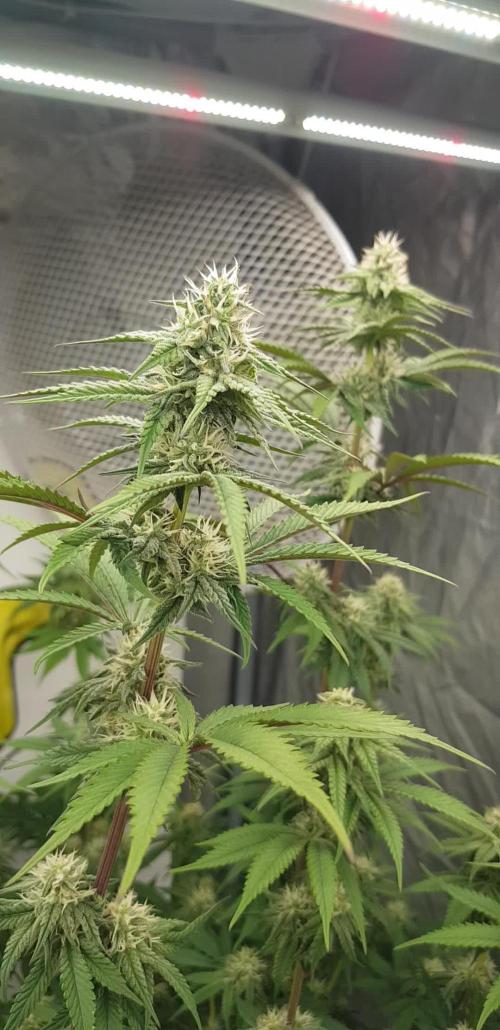



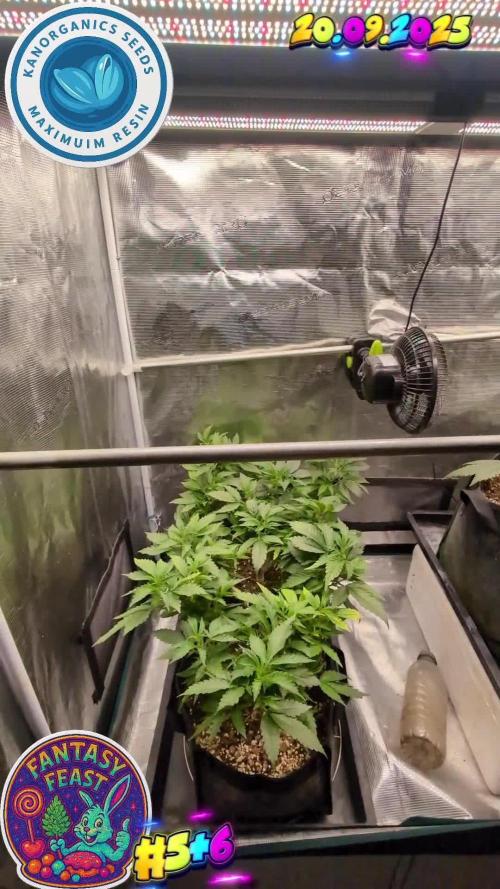







Likes
Comments
Share


@Tropicannibis_Todd
Follow
💩Holy Crap Growmies , we are outdoors and in the Ground💩
👉It's been another full week 28 days from seed and she's doing great , very nice Growth, considering shes been up against the wind and rain 👈
No problems 😊 so far so good 👍And she's in full on flower , ahead of the rest 😁👈
I GOT MULTIPLE DIARIES ON THE GO 😱 please check them out 😎
👉THANKS FOR TAKING THE TIME TO GO OVER MY DIARIES 👈
👉NutriNPK NUTRIENTS USED FOR FEEDING 👈rain water to be used entire growth👈
👉www.nutrinpk.com right now get 10% off using SPRING2022 as the coupon code👈
Likes
278
Share


@Metatronix
Follow
A big hello to all the cannabis growing gardeners...and all the other visitors that came across my grow journal.
I'm a little bit late with starting this grow because the plants will finish around end of december or so, so i'm basically counting on a warm december :)
This grow was supposed to start earlier, and I did germinate 11 seeds last month but only three of the lot sprouted out, it was totally my fault and i did abort that grow so we could start with a clean slate and at least four plants....so here we are ;)
All three seeds popped after 36 hours in a glass of water, but thanks to my thick awkward fingers only two seedlings came out after planting in rockwool...my fingers are killers to most of my little sprouts :/
We were gifted Moby Dick seeds by Romy from Seeds Mafia to take part in the competition they are running.
Thank you Seeds Mafia, for giving me the opportunity try out your stock. It's the first time we get to grow Seeds Mafia cultivar.
https://seedsmafia.com/en/feminized-cannabis-seeds/moby-dick-feminized.html
This whole grow's main sponsor is Spider Farmer and as such I added a video of unpacking one of the parcels I got from SF.
Here are the links for people interested in the Spider Farmer products that are presented in the videos:
https://www.spider-farmer.com/products/spider-farmer-30w-uv-led-grow-light-bar/
https://www.spider-farmer.com/products/spider-farmer-30x-60x-jewelers-loupe-magnifier-for-led-light/
A big thank you to Jessie and the whole Spider Farmer crew for supporting my effort to grow the best cannabis I can.
Let's get this started already!
Thank you for your visit, please leave a like and hope to see you beck here in about a week.
Likes
51
Share


@BudBoutique
Follow
Welcome to Bud Boutique Grow Diary - really appreciate all your love and support :)
Dont forget to check out my other current grows!
🗓️ This Week:
- Day 52: the end is near - fading out colors super beautiful
- Day 53: Trichomes check - looking super good almost all cloudy, a few amber and clear. perfect point to chop
- Day 54: this one is finished, let's chop them !! ✂️✂️✂️
- now its time to dry inside the tent at about 60%rh and less than 20°C/68°F trying to get it even lower for the next 10-14 days - in complete darkness
Thank you for still staying with me 💚
___________________________________________
--- 🌱 Strain (Sponsor) 🌱 ---
🏷️ Big Band by Kannabia Seed Company
https://www.kannabia.com/en/feminized-cannabis-seeds/big-band
--- 🥗 Nutrients and Feeding (sponsored by APTUS: APTUS Ambassador) ---
🍸 APTUS: full nutrient schedule extreme
-- Regulator, N-Boost, P-Boost, CaMg-Boost, K-Boost, Allin1 Liquid, Startbooster, Topbooster, Enzym+ every feeding
-- Fulvic-Blast, NutriSpray as Foliar each once a week
🔗 https://aptus-holland.com/
--- ♻️ Grow Control (Sponsor) ---
TROLMASTER: TENT-X + LM14 Light Adapter to dim/sunrise/sunset lights + Temp & rH Sensor all remote on App
🔗 https://www.trolmaster.eu/
--- 🚿 PetraGrow (Sponsor) ---
CannaFogger Foliar Spray
🔗 https://www.petratools.com/product/petragrow-cannafogger-atomizer-new-mini-fogger
--- 🏭 Grow Setup ---
💡LUMATEK Zeus Pro 600
* 🏠🌿 Indoor: Homebox 120x120x200cm (4x4)
* 📐🌀 PrimaKlima exhausting Fan 1180m3/h (running on 60-80%)
* 🌀 Can Light Filter 800m3/h & 1x Fanbox 1x Dyson fan for Air circulation
🔗 https://lumatek-lighting.com/zeus-600w-pro-29/
🔗 https://primaklima.com/de/shop/ventilatoren-de/ec-ventilatoren/pk160ec-tc/
🔗 https://canfilters.com/products/filters/
All Likes and comments are highly appreciated!!!
👨🌾 don't forget to check out my Instagram for daily educational content: budboutiquee
- Bud Boutique
Likes
3
Share


@BushDoctor740
Follow
So I topped the girls again and moved them outside to the natural sun for the rest of the season.They are thriving and enjoying Mother Nature as intended for these girls.
Likes
109
Share


@MadeInGermany
Follow
Welcome to the Green House Seeds Company Cup 🏆
Day 27 since the time change to 12/12 h.
Hi everyone 🤗.
Every day is a great pleasure as soon as I open the tent and the sweet scent rises in my nose 😍.
The buds continue to develop day after day, and look more and more delicious 😃.
She has stopped growing in height and is fully focused on flower production 👍.
Green House Powder Feeding does exactly what it should 😎.
I am very excited to see how it will develop next week and I hope you enjoy the new update 😃.
Stay healthy 🙏🏻 and let it grow 🌱🙏🏻
You can buy this Strain at :
https://greenhouseseeds.nl/
☝️🏼☝️🏼☝️🏼☝️🏼☝️🏼☝️🏼☝️🏼☝️🏼☝️🏼☝️🏼☝️🏼☝️🏼
Green House Seeds Company Cup 🏆
Type:
Wonder Pie
☝️🏼
Genetics:
Wedding Cake x OG Kush
👍😍
Vega lamp: 2 x Todogrow Led
Quantum Board 100 W
💡
Flower Lamp : 2 x Todogrow Led
Cxb 3590 COB 3500 K 205 W
💡💡☝️🏼
Earth: Canna Bio
☝️🏼
Fertilizer: Bio Grow Feeding ( GHSC ) , Enhancer ( GHSC ) , Bio Bloom ( GHSC)
☝️🏼🌱
Water: Osmosis water mixed with normal water (24 hours stale that the chlorine evaporates) to 0.2 EC. Add Cal / Mag to 0.4 Ec Ph with Organic Ph - to 6.0
Likes
2
Share


@Chi_K24
Follow
Hey folks into week 7. Same as usual. Watering when required with some lst here and there. Nothing else to report. Maybe sometime this week I will spray the ladies down with neem oil as preventive maint.
Cheers
Likes
21
Share


@Wicked_Stix
Follow
Had a lot going on this week so the plants didnt get any care or maintenance at all other than just checking on the water level a couple times. They need some major defoliation which I wanted to do this week but procrastination is the vibes currently. Will probably get some done next week.... the plants are looking good and most of them are bushing out pretty nice. They dont seem to be stretching as much as they normally do by this time, but they are transitioning to flower. Will probably do a flush and water change soon since they haven't had one in over a month. I'm just anxious to see some frosty buds at this point.
Likes
10
Share


@6toecat
Follow
Adding water level checks to the NodeRED code to prevent pump from running when water level is too low.
Read more here: https://hackaday.io/project/188129-rhaspberry-pi4-basic-watering-system-for-balcony
Likes
6
Share


@OrionSparkles
Follow
👤
-Las estoy dando aplicaciones de PK booster compost tea,15 gramos por litro((una cucharada)).
Aireando la mezcla 36 horas con bomba de aire y piedra difusora antes de regar.
Van dos riegos con esta mezcla,quedarán unos cuatro más.
Likes
14
Share


@GERGrowDesigns
Follow
Welcome to Flower Week 4 of Sensi Seeds Purple Berry Muffinz
I'm excited to share my grow journey with you from my
Sensi Seeds Project . It's going to be an incredible ride, full of learning, growing, and connecting with fellow growers from all around the world!
For this Project , I’ve chosen the Feminized Photo Strain Purple Berry Muffinz:
Here’s what I’m working with:
• 🌱 Tent: 120x60x80
• 🧑🌾 Breeder Company: Sensi Seeds
• 💧Strain Info : 26%
• ⏳ Flowering Time: 6-7weeks
Likes
21
Share


@PabloTheGrower
Follow
Sticky sticky and smelly smelly, can't say much more.
Buds are densing up quite nicely and theres a lot o resin production. I always find the strain names quite dumb, but this actually has hints of coke in it's smell. Very sweet and fresh.
I raised the EC to 0.95 considering my water was on 0.25, so plus 0.7 of nutrients and the light is at 100%, putting roughly 750 ppf average.
See you guys next week and good grows.
Likes
195
Share


@yan402
Follow
This two were part of another diary and got moved out due to space reasons at VW8 and moved back indoors at VW20
https://growdiaries.com/diaries/218151-auto-god-s-glue-grow-journal-by-yan402
13.09.25 VW21 Both are looking good and are developing tighter nodes than when they were outside, I'm going to have to keep cutting them back every once and a while I also applied nematodes against thrips and fungus gnats.
20.09.25 VW22 some spots and some yellow leafs, I think it's a root problem, probably root bound, but both seem healthy and are getting thicker so maybe just top up with Coco coir and give a slight different nutrient schedule less Tri Part Bloom could do the trick MAYBE lol.
🌱💦🌱💦🌱💦🌱💦🌱💦🌱
Day to day tasks & actions 🌿
🌱💦🌱💦🌱💦🌱💦🌱💦🌱
20.09.25 VW22 – Fed 3l of plain water→ 1l runoff
21.09.25 VW22 no water no feed
22.09.25 VW22 – Fed 3l of #1 → 1l runoff
23.09.25 VW22 – Fed 3l of #1 → 1l runoff
24.09.25 VW22 – Fed 3l of #1 → 1l runoff
25.09.25 VW22 no water no feed
26.09.25 VW22 no water no feed
27.09.25 VW22 – Fed 3l of #1 → 2l runoff
(*RUNOFF reused for tomato plants)
🍶💧🍶💧🍶💧🍶💧🍶
💧 Nutrients in 30L #1
🍶💧🍶💧🍶💧🍶💧🍶
💧 TriPart Micro:
10ml
= 0.33ml/L
🍶 TriPart Grow:
0ml
= 0.00ml/L
💧 TriPart Bloom:
10ml
= 0.33ml/L
💧 Cal-Mag:
60ml
= 2.00ml/L
🍶 Home-made FFJ/FPJ (new batch):
30ml
= 1.00ml/L
💧 pH Down:
Citric acid (BuxXtrade) — adjust to ~pH 6.0
📦 TOTAL:
120ml per 30L
🔬 4.00ml/L
🍶💧🍶💧🍶💧🍶💧🍶
⚙️✂️⚙️✂️⚙️✂️⚙️✂️⚙️
✂️ Tools & equipment ✂️
⚙️✂️⚙️✂️⚙️✂️⚙️✂️⚙️
✂️ 2× MarsHydro SP3000
⚙️ MarsHydro 150mm ACF Ventilator
✂️ Trotec dehumidifier (big unit)
⚙️ Mini no-name dehumidifier
✂️ Kebab skewers (LST – stainless)
⚙️ Wire + roast skewers (LST assist)
✂️ Scissors (HST)
⚙️ Vacuum (for spills & cleanup)
✂️⚙️✂️⚙️✂️⚙️⚙️✂️⚙️✂️⚙️✂️⚙️
🍒🍭🍬🌈🍒🍭🍬🌈🍒🍭🍬🌈🍒
🦄Fantasy Feast ( Seeds)🦄
🌈🍒🍭🍬🌈🍒🍭🍬🌈🍒🍭🍬🌈🍒
Species: Hybrid (Regular)
Genetics: The mother is Unicorn Whip by Dirty Bird Genetics. The father is Charcuterie by Cannarado Genetics.
Effect: Unknown Mixed effect body and head high
Flavor: Some phenos are Skunky gassy fruity, some are fruity sour citrus with a chemical touch and a touch of skunk
Flowering: Estimated 8–10 weeks
Resistance: Strong — Testing phase done
Likes
16
Share


@Love420bluedream
Follow
I'm very happy I've already got 107 grams out. I still have 2 plants drying and I'm excited to see how they turn out😊😊💚
Likes
260
Share


@SlowpokeFuegobud
Follow
🐒 🍌 🌴🐒 🍌 🌴🐒 🍌 🌴🐒 🍌 🌴🐒 🍌 🌴🐒 🍌 🌴🐒 🍌 🌴
Welcome to week 5!! 😘
Let me explain the last weeks.
Monkey got ripped in two halves as a baby, which made her grow very slowly.
Donkey is actually 10 days younger, this is her 5th week.
The two grow approx the same speed so let's just pretend they are the same age! 😜
DAY 29
Defoliation of some huge fan leaves + LST 💪 😈
Watered with Green Buzz nutes now!! 😍 💧
0,5ml Grow – 3ml Roots – 5ml Fastbuds – 2ml Humic – 3ml Growzyme
DAY 30
Preflowering 🌸💮🏵️🌺🌻🌼🐙
Switch 12/12 😎
DAY 32
Watered with Green Buzz Nutrients 💚 💩 2L each 💧0,5ml grow + 2ml bloom + 3ml roots + 2ml growzyme + 2ml humin + 5ml fastbuds
DAY 35
Watered with Green Buzz Nutrients 💚 💩 2L each 💧1ml grow + 2ml bloom + 3ml roots + 3ml growzyme + 3ml humin + 5ml fastbuds + 1 tsp Living Organics as topdressing..
Thanks, my growmies for visiting and reading and commenting, I love reading your comments! Mwah! 😘
Thank you, @Kannabia, for sponsoring this grow, aaaaand for the amazing gift pack! 😍 I hope to make you proud! 🧡
Special shouts out to my new sponsor @GreenBuzzNutrients! Thank you for trusting me with your awesome products, I'm a longtime fan! 💚 🙏 Big juicy growmie hugs to my Greenbuzzers!! 😘
Grower Love to everybody!!!11 💚 💚💚💚💚💚💚💚
Wishes do come true, they just take a lot of time sometimes.. ✨
If you wish to try Green Buzz Nutrients, there's a 25% discount code hidden down there in the week comment somewhere.. 😎
__________________________________________________________________
https://www.kannabia.com/en/feminized-cannabis-seeds/monkey-grease
Monkey Grease
At Kannabia Seeds we have put all our effort into bringing out our own feminized Monkey Grease, a cross between Monkey Grease x White Widow, focusing above all on giving it its own personality in flavor and aroma (frankly unmistakable).
Its own personality
At Kannabia Seeds we have put all our effort into bringing out our own feminized Monkey Grease, a cross between Monkey Grease x White Widow, focusing above all on giving it its own personality in flavor and aroma (frankly unmistakable) and, of course, in Highly demanded characteristics, such as high resistance to diseases and pests, and adaptability to all types of growing conditions, making it close and easy to grow to the widest possible range of growers. The result is a really powerful and versatile indica-sativa marijuana seed, with a powerful relaxing effect, ideal for those moments when you want to disconnect from the madding crowd.
Cultivation of Monkey Grease
Which cultivation method would be most appropriate for this variety? Good question… and one that is easy to answer. Its versatility and adaptability make it a true all-rounder, with remarkably uniform results, whether you choose SOG, SCROG, hydroponics or guerrilla growing. Moreover, we invite you to experiment and play, varying the techniques from moment to moment, and to draw your own conclusions. We are convinced that in all cases, apart from minor variations, the results will always be optimal, giving remarkable yields and in a short time.
Attention should be paid to its high bud production, which can be fat, dense and heavy, although its sturdy branches are able to bear heavy loads without major problems. If you are a fan of extractions, our Monkey Grease is also optimal, given its high production of caramelised resin.
If it is already amazingly productive indoors, this variety excels on its own merits outdoors, where it can easily reach 200 cm in height, and can reach between 700 and 800 grams per plant.
It is therefore an easy and grateful plant, which demands little from its gardeners, making do with simple basic care, and with little or no propensity to develop diseases or mildew, or to attract pests (despite its striking aroma!).
Taste and effect of Monkey Grease
Our Monkey Grease stands out first and foremost because of its powerful, strong smell, which is hard to camouflage. A penetrating aroma that unfolds, in a balanced way, on the palate in the form of a wide range of spicy and sweet flavours, reminiscent of wild honey, nougat and cinnamon, and distant notes of milk chocolate. A delicious treat to be savoured calmly, without haste, as a preamble to its pleasant effect: extremely relaxing and narcotic, powerful, ideal for meditation and moments of introspection and meditation.
Don’t be in a hurry with Monkey Grease. It can be your perfect ally to treat those stress and anxiety problems, but for that you must let yourself go, surrender to its charms, especially if you are inexperienced.
________________________________________________________
Setup:
60x60x180 cm Zelsius
Greenception GC4 128W
4 Cluster OSRAM + CREE LEDs (380, 455, 630, 660, 720, 760nm)
6400k (cold-white to cover the basic load during the growth)
2100k (warm-white to cover the basic load during the blossom)
The module groups can be switched individual as follows:
⬤ Module I: growth 1x 32 watt
⬤ Module II: full spectrum: 2x32 watt
⬤ Module III: Bloom: 1x 32 watt
⬤ Module I is optimized for the growth phase. A relatively high amount of blue and white support a dense growth.
⬤ Module II suits for the growth as well as blooming phase. Optimal plant light full spectrum.
⬤ Module III is optimized for the bloom. A high portion of red and an additional infrared push.
Green Buzz Nutrients https://greenbuzzliquids.com/
❗ Use code GD42025 for generous 25% discount (for orders of minimum 75€) 💚
Plagron Growmix
Carbon Active Granulate 240cm³/h
tab water pH 8 - EC 0,25 with Calmag to 0,5
Advanced Hydroponics pH minus Grow + Bloom to pH 6.5 💧
🐒 🍌 🌴🐒 🍌 🌴🐒 🍌 🌴🐒 🍌 🌴🐒 🍌 🌴🐒 🍌 🌴🐒 🍌 🌴
Likes
13
Share


@leithsffs
Follow
I started harvesting 6 days ago. I'll finish it tomorrow.
I was in trim jail Aaaaalllllll day today. I started at 5:30am and finish putting the last label on the jars at 6:30pm. I did, however, take a 1 hour break for lunch.
The results for Sept 21:
Orange Sherbet FF - 188.43 grams, 6.73oz (2 plants)
Gorilla Cookies FF - 86.97 grams, 3.1oz
The results for Sept 27:
Orange Sherbert FF - 104.5 grams, 3.73 oz (2 plants)
One more quick trim day to go.
The results for Oct. 3:
Gorilla Cookies FF - 36.28 grams, 1.3 oz
Not including all of the little popcorn buds I chopped up and threw into the trim, it's 14.86 oz.
That's it for this run.
Take care, gromies!!



